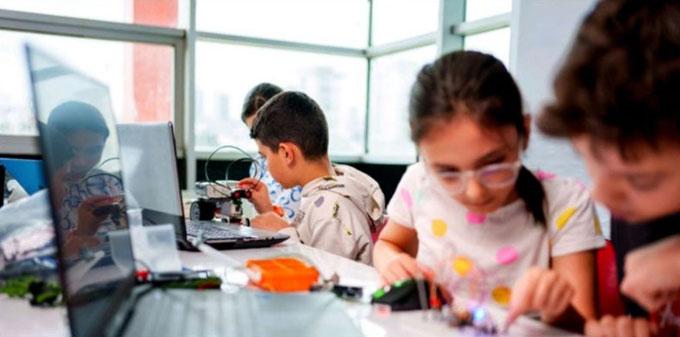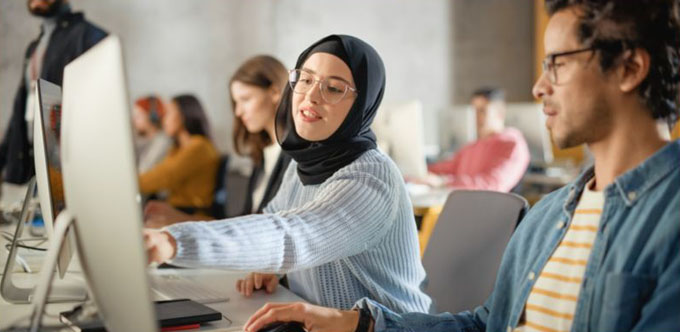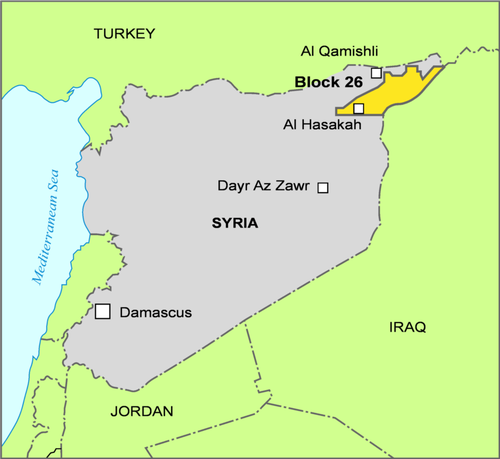
Gulfsands has provided key support to the charity Phoenix Space, enabling the launch of two new educational programmes which will reach at least 160 young people in Aleppo and surrounding rural areas.
Working in partnership with the The Syrian Society for Social Development, SSSD, these programmes come at a critical moment for Syria as it begins to recover and rebuild. By directly addressing the educational inequity facing Syrian youth and equipping them with vital STEM skills, these programmes will help prepare beneficiaries to make meaningful contributions to Syria’s recovering economy.
The first new programme, ‘STEM Spark’, is designed to foster scientific curiosity in children by teaching problem-solving through hands-on lessons in space science, programming, algebra, Newtonian mechanics, and experimental design. The second, ‘Digital Technologies in the Workplace’, is targeted at older youth and equips them with workplace-ready skills including digital design, data literacy, and programming.
These new educational projects are a continuation of various programmes supported by Gulfsands since 2022, previously aimed at displaced Syrians in refugee camps, particularly in Jordan.

Gulfsands Managing Director, John Bell, said:
“We are delighted to support these programmes, especially now that they can be delivered to Syrians within Syria – a sign of an exciting new era for the country. Education is key to rebuilding the country. In this spirit, building and nurturing local talent will also be a central element to Gulfsands’ activities when we return to energy operations in Syria, which we hope will be in the near future”.
As Syria enters a pivotal phase in its reconstruction, there can be no investment more important than the country’s youth and education. Syria’s infrastructure has been devastated by a decade of conflict. But by empowering the next generation with STEM and digital literacy skills, a sustainable recovery – with young people as the catalysts – beckons. As these programmes roll out, Gulfsands is already looking ahead with Phoenix Space and SSSD as to how they can be scaled-up to drive long-term capacity-building for a brighter, more inclusive Syria.

Gulfsands Syria operations
Gulfsands Petroleum’s operations in Syria have been centred on Block 26 in the northeast—home to the Khurbet East and Yousefieh oilfields, which once produced nearly 25,000 barrels per day before Western sanctions were imposed in December 2011. At that time, citing EU restrictions, Gulfsands invoked a force‑majeure clause and exited active production, though it retained its 50% operating interest (alongside Sinochem) and ensured legal compliance to preserve its rights under the production‑sharing contract.
Between 2011 and the present, unauthorized local extraction — sometimes referred to as “illicit” or “stolen” by Gulfsands — continued, averaging around 14,000 to 20,000 b/d by 2024, under the control of the Kurdish-led Syrian Democratic Forces and their partners . Gulfsands has consistently maintained a presence in Damascus and has been negotiating with Syria’s post‑Assad government to restore formal control of Block 26, supported by coordinated engagement with the Ministry of Energy and the General Petroleum Corporation.
Since the Assad regime fell in December 2024, major energy‑sector sanctions have been lifted—first by the UK in March–April 2025, then by the US (General Release 25) in May 2025, and by the EU in February and May 2025. With that legal and commercial clarity, Gulfsands has launched a formal re‑entry strategy—dubbed “Project Hope”—to lift the force‑majeure, restart exploration of nine prospects, restart production, and carry out environmental remediation, while ensuring local employment and sustainable practices.
In interviews conducted in June 2025, Gulfsands Managing Director John Bell expressed optimism about returning to operations as soon as the security and legal frameworks allow. He emphasized that preparations are underway to re‑establish Dijla Petroleum Corporation (the joint operating vehicle), collaborate with the Syrian authorities, and responsibly scale output—potentially restoring up to 50,000 barrels of oil equivalent per day from known reservoirs, with upside beyond 100,000 b/d.
KeyFacts Energy: Gulfsands Petroleum Syria country profile
 KEYFACT Energy
KEYFACT Energy